1st INFANTRY DIVISION FLAGS & GUIDONS • D-DAY ORGANIZATION
1944 REGULATIONS
The World War II US Army infantry division was formed with three infantry regiments, each of three battalions, a division artillery headquarters contolling four field artillery battalions, a combat engineer batalion, a mechanized cavalry reconnaissance troop, and various service and support units. The distinguishing flag for infantery divisions had horizontal stripes of scarlet and national flag blue, with the divisional shoulder sleeve insignia (SSI) centered in proper colors. The flag was made of wool bunting, 3 feet at the hoist by 4 feet on the fly. It was always carried or displayed with a National Standard, Service of the same materials and dimensions plus a 2 1/2-inch fringe of knotted yellow silk. The division's subordinate units also has distinguishing flags or, for the infantry regiments and separate battalions, silk organizational colors. Company-sized units had guidons.
Included on this page are the flags and guidons of those units that were attached to the Big Red One on D-Day, 6 June 1944.
NATIONAL STANDARD, SERVICE, DISTINGUISHING FLAG & HEADQUARTERS COMPANY GUIDON
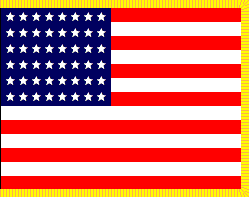
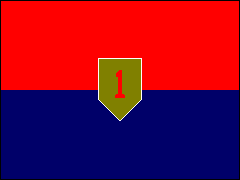
1st INFANTRY DIVISION
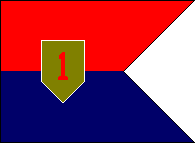
HEADQUARTERS COMPANY & SPECIAL TROOPS, 1st INFANTRY DIVISION
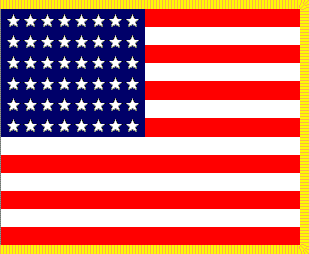
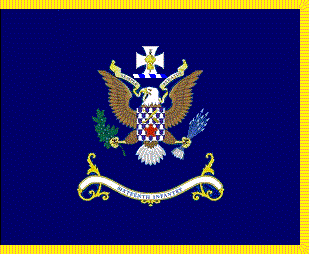
NATIONAL & ORGANIZATIONAL COLORS FOR REGIMENTS AND SEPARATE BATTALIONS • 16th INFANTRY REGIMENT
Colors for regiments and separate battalions displayed the unit's coat of arms on the breast of an American eagle. The scroll grasped in the eagle's beak bore the regimental motto, e.g.SEMPER PARATUS (Always Ready) for the 16th Infantry. A scroll beneath the eagle bore the unit designation. If one was authorized,the unit's crest was placed above the eage's head. Colors of infantry regiments and battalions had a field of national flag blue and yellow fringe. For other branches, the field was in the primary branch color and the knotted silk fringe was in the secondary branch color, e.g. scarlet and white for the Corps of Engineers. Colors were made of silk in two sizes: 4 feet 4 inches at the hoist by 5 feet 6 inches on the fly for infantry and other dismounted units, or 3 feet at the hoist by 4 feet on the fly for mounted and motorized units. The fringe was 2 1/2 inches for all colors.
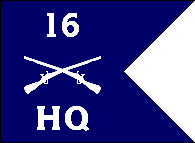
16th INFANTRY REGIMENT
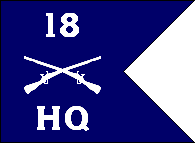
18th INFANTRY REGIMENT
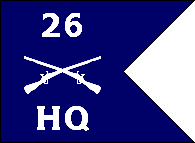
26th INFANTRY REGIMENT (DETACHED TO 28th INFANTRY DIVISION)
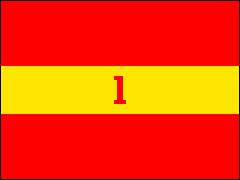
1st INFANTRY DIVISION ARTILLERY (-)
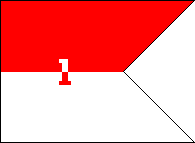
1st CAVALRY RECONNAISSANCE TROOP (MECHANIZED)
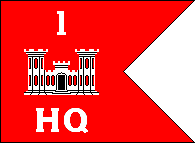
1st ENGINEER COMBAT BATTALION (-)
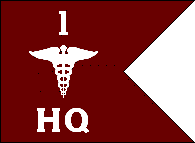
1st MEDICAL BATTALION (-)
ATTACHED UNITS
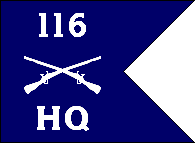
116th INFANTRY REGIMENT (+)
(ATTACHED FROM 29th INFANTRY DIVISION)
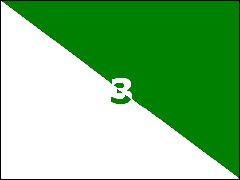
DETACHMENT, 3rd ARMORED GROUP
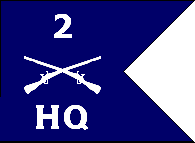
2nd RANGER BATTALION (PROVISIONAL RANGER GROUP)
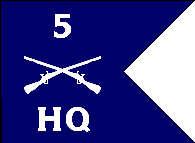
5th RANGER BATTALION (PROVISIONAL RANGER GROUP)
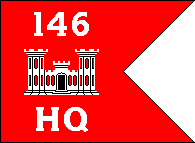
146th ENGINEER COMBAT BATTALION
(DETACHED FROM 1171st ENGINEER GROUP)
(SPECIAL ENGINEER TASK FORCE)
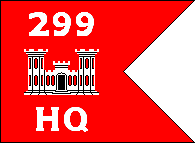
299th ENGINEER COMBAT BATTALION (-)
(SPECIAL ENGINEER TASK FORCE)
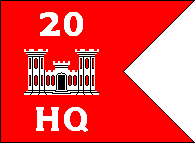
20th ENGINEER COMBAT BATTALION
(DETACHED FROM 1171st ENGINEER GROUP)
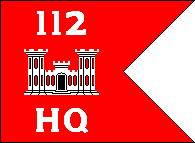
112th ENGINEER COMBAT BATTALION
(DETACHED FROM 1121st ENGINEER GROUP)
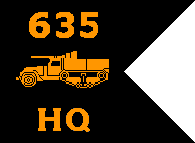
DETACHMENT, 635th TANK DESTROYER BATTALION (3in GUN) (TOWED)
(DETACHED FROM 3rd TANK DESTROYER GROUP)
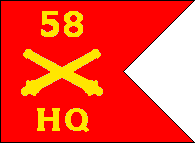
58th FIELD ARTILLERY BATTALION (105mm SP)
(DETACHED FROM 5th FIELD ARTILLERY GROUP)

62nd FIELD ARTILLERY BATTALION (105mm SP)
(DETACHED FROM 5th FIELD ARTILLERY GROUP)
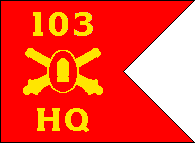
103rd ANTIAIRCRAFT ARTILLERY BATTALION
(AUTOMATIC WEAPONS) (MOBILE)
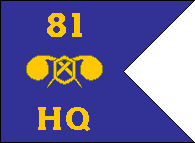
81st CHEMICAL BATTALION (MOTORIZED) (4.2in MORTAR)
(DETACHED FROM V CORPS)
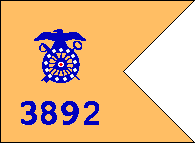
3892nd QUARTERMASTER COMPANY (TRUCK)
(DETACHED FROM 97th QUARTERMASTER BATTALION
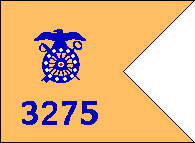
DETACHMENT A
3275th QUARTERMASTER COMPANY(SERVICE) (COLORED)
(DETACHED FROM 97th QUARTERMASTER BATTALION